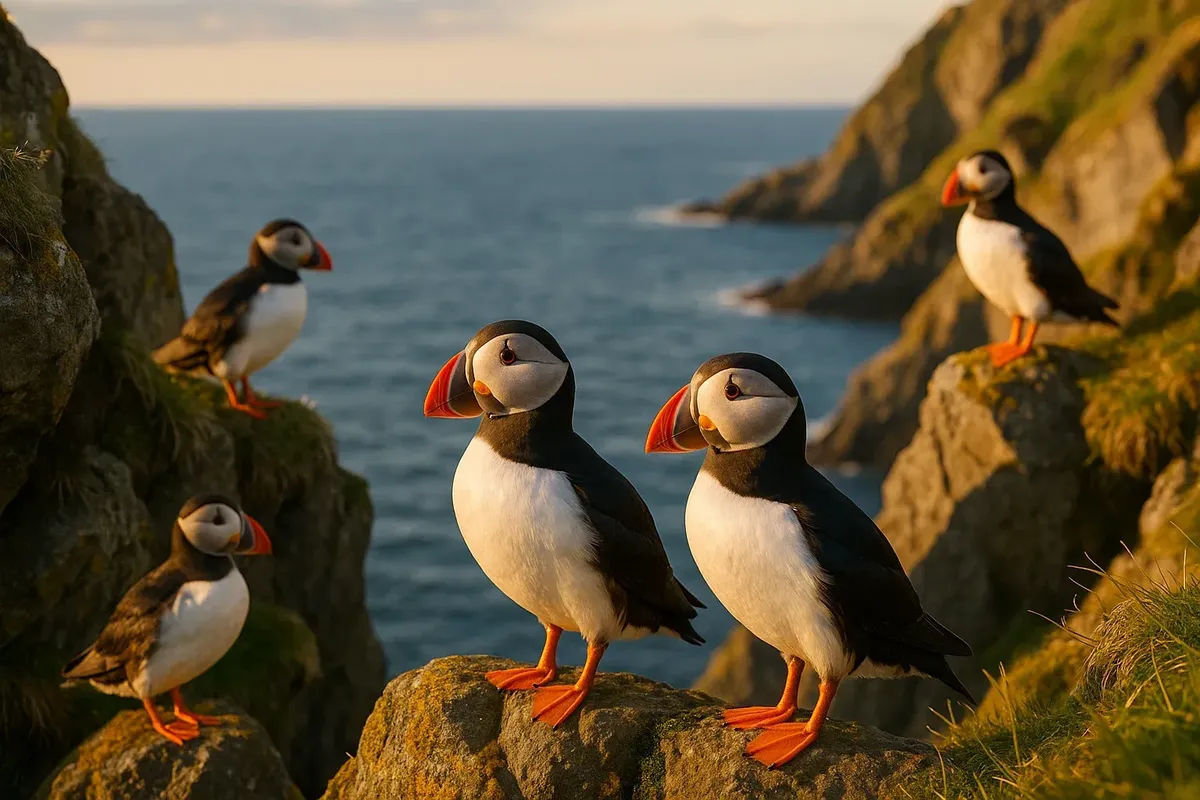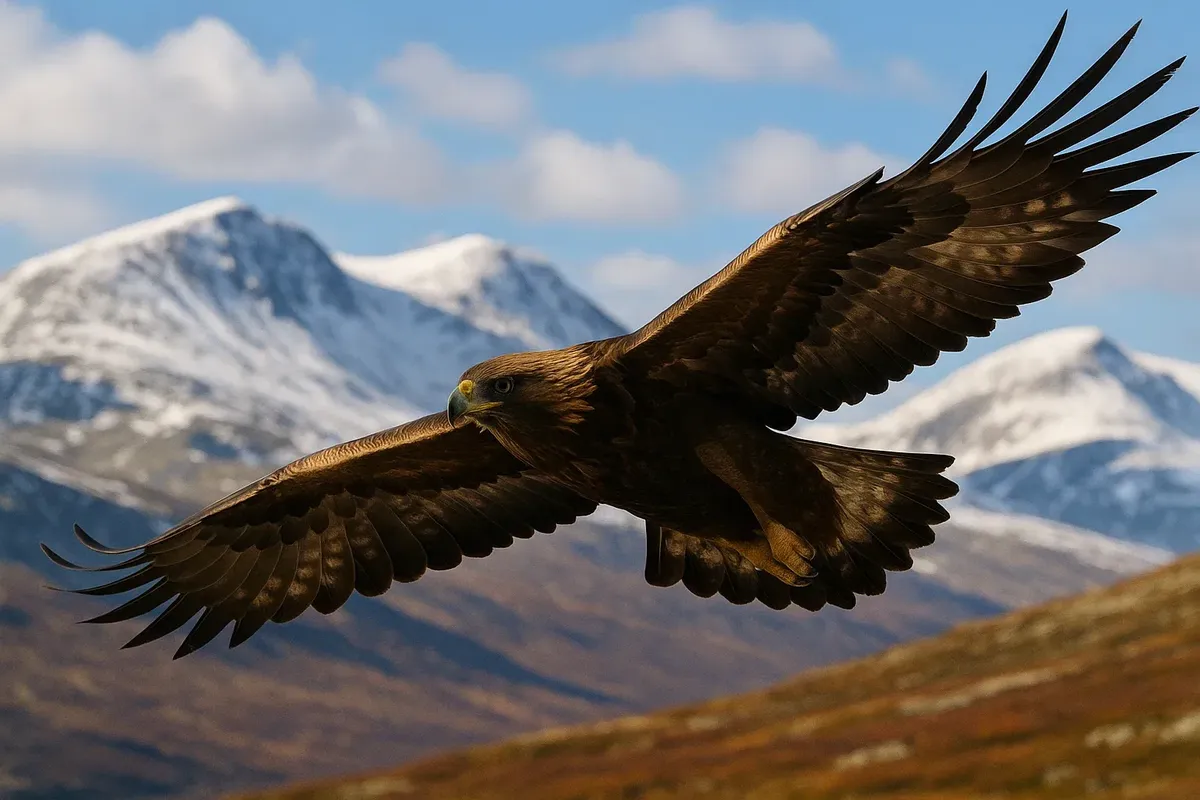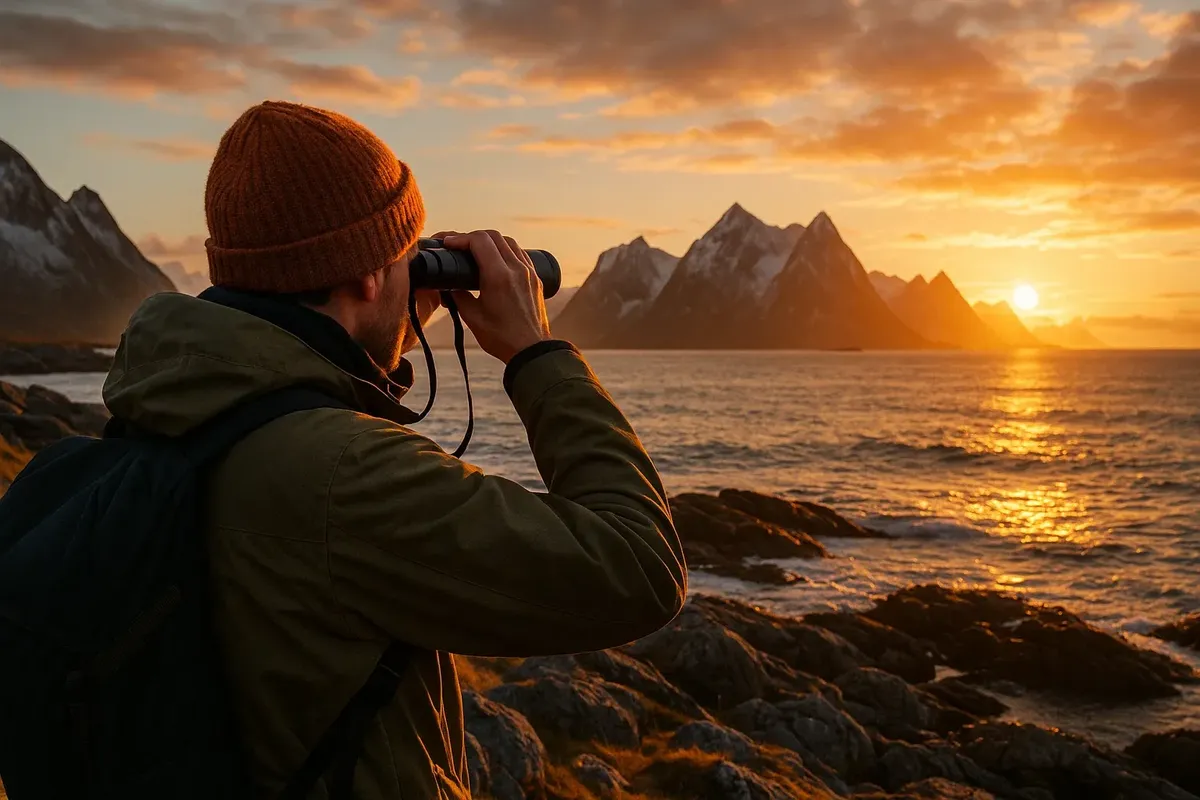🐦 Independent bird watching in Norway: tips for beginners
I'm sure you'll be as amazed as I was to discover that Norway has thousands of different species of bird. They're all over the place, in the forests, the mountains, along the coast and on the islands, and there are millions of them! Birdwatching is such a fascinating and accessible activity, isn't it? I just love how popular it is here, thanks to all the different types of birds we have. If you're just starting out in the wonderful world of birdwatching, you'll find this article a really helpful guide to the bird world of Norway.
📖 What you will learn from this article:
- So, let me tell you about the very best regions and places for birdwatching.
- The best time of year and time of day for birdwatching!
- We've put together a list of the best equipment to make your birdwatching experience as comfortable as possible.
- Here are some handy tips and tricks to help you have the best possible birdwatching trip!
🇳🇴 Norway is absolutely amazing for birdwatching!
1️⃣ The stunning Lofoten Islands!
Lofoten is an absolute paradise for bird lovers! It is home to huge colonies of seabirds: puffins, kittiwakes, cormorants and white-tailed eagles.
- 📍 Popular spots: Røst Island, Egum village.
- 📆 Best season: April–July.
2️⃣ Runde Island – an absolute gem!
Runde is a place like no other, with its huge colony of puffins and other seabirds, such as guillemots and kittiwakes. Here, you can get up close and personal with these amazing creatures.
- 📍 Popular spots: routes around Runde Island.
- 📆 Best season: May–August.

3) Glomma River Delta (Østfold) – an absolute must-see!
This place is simply teeming with life! It attracts large numbers of water birds, including swans, geese, ducks and various waders.
- 📍 Popular spots: Øyeren Nature Reserve.
- 📆 Best season: The incredible spectacle of spring and autumn migration is a truly awe-inspiring event!
4️⃣ The majestic Dovrefjell-Sunndalsfjella!
This area is home to some of the rarest and most beautiful species of birds in the world, including golden eagles, white grouse, Lapland longspurs and eagle owls.
- 📍 Popular spots: the route to Mount Snøhetta.
- 📆 Best season: May to September.

5️⃣ Femunsmarka National Park – an absolute gem!
This is absolutely perfect for our feathered friends in the forest, from the mysterious owls and woodpeckers to the majestic capercaillies and beautiful black grouse. It's the perfect spot for beginners!
- 📍 Popular spots: the shores of Lake Femunden.
- 📆 Best season: Spring and summer are the perfect seasons for this!
🕒 The best time for observation is…
- Early morning:
It's so exciting to know that birds are most active at dawn! From 5:00 to 9:00 is the best time to spot them, as they're out and about looking for food.
- The late evening is going to be amazing!
It's a sight to behold, as the nocturnal species come out to play.
- Seasonal migrations:
Spring (April–May) and autumn (September–October) are the best times to see the amazing spectacle of birds on migration.

🎒 Essential equipment for birdwatching – let's go out and explore!
All you need to enjoy a successful and comfortable birdwatching trip is:
🔭 Optics:
- Binoculars: with 8–12x magnification. The best choice for beginners: I'm so excited to tell you about the options we've got for you here: either an 8x42 or a 10x42.
- Spotting scope: the perfect tool for observing at long distances, ideal for spotting seabirds!
📸 Camera:
- A camera with a telephoto lens (200 to 600 mm) – perfect for all your adventure photography! The great thing is, you can start with simple models and gradually improve your photography skills.
🗺️ Maps and guides:
- The perfect bird guide for Northern Europe (e.g. the Collins Bird Guide).
- Check out these amazing apps: Merlin Bird ID and iNaturalist! They're incredible tools that let you identify species just by listening to their voice and looking at their appearance.
🧥 Clothing and footwear:
- Make sure you're prepared for all weathers with our range of moisture-proof and warm clothing, gloves and hats, even in summer!
- These fantastic boots are the perfect combination of comfort and practicality! They're waterproof and have non-slip soles to keep your feet safe and sound.
I've got some super helpful tips for you if you're just starting out as a birdwatcher!
- If you're feeling a bit nervous about studying, just remember that you've got this! You've got all the time in the world to get everything you need to know, so take your time and don't worry.
It's a great idea to get to know the species that can be found in your chosen region. This will help you find and recognise them more quickly in the wild, which is really great!
- Please be patient and observant, my friend.
Birds are cautious and skittish creatures, aren't they? Take your time, stop and look around, and listen to the world around you. Patience is your best friend, and I'm here to support you every step of the way.
- Please feel free to record your observations.
If you could, please try to keep a field notebook with you at all times. It would be really great if you could write down the species of birds you see, where you saw them and the date. This will help you get organised and see your progress.
- Don't worry, just use the cover!
Why not take advantage of the lovely natural cover of trees and bushes, or the specially equipped observation platforms?
- Please, don't bother the birds.
Please remember not to go near nests or feeding areas. If you want to see the animals in their natural habitat, it's best to use telephoto lenses and binoculars so you don't disturb them.
Let's talk about how to be a good birdwatcher together!
- Please try to stay calm and quiet.
- Please help us to keep our spaces tidy by tidying up after yourself.
- I would just like to remind you that you should only use audio decoys when you really need to (especially during the breeding season).
- Please remember not to approach nests or chicks.
Here's a lovely route for you to try out if you're just starting out (here's an example for you).
We've got a lovely route planned for you on Runde Island, and we can't wait to see you there!
- Why not start your adventure in the lovely village of Runde?
- Come on, let's climb the marked trail together to the cliffs where the puffins and kittiwakes are!
- You can also get some great views of the birds from an equipped platform, where you can find helpful signs and information boards.
- Then, when you're ready, head back to the village via a lovely, circular route.
Just so you know, the route is about 5 kilometres long. How long does it take? 3–4 hours.
Birdwatching is such an amazing hobby! It's a great way to learn more about the world around us. So, read on to find out how you can get started on your own adventure of discovery of Norway's amazing birds.
Grab your binoculars, camera and comfy shoes, choose a spot you like, and set off on an amazing adventure into the world of the feathered inhabitants of the north!





2 comments
Log in to leave a comment
Hvilken fugl synes dere er det beste første “funnet” for en nybegynner å se? 🔭